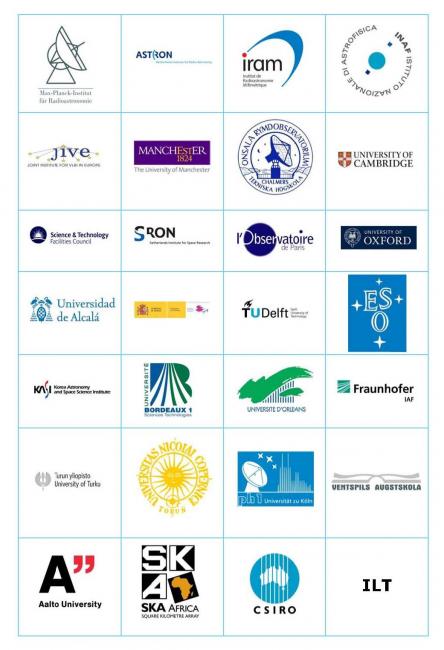 The participants of RadioNet3 bring together a wide range of relevant expertise in the field of radio astronomy. The consortium includes 27 organisations, including all of the major radio observatories in Europe. In addition, institutes with state-of-the-art knowledge in advanced electronics are also valued partners in the programme. Strong collaborations exist with large international organisations and associations such as ESO and the SKA project. The competence of the participants spans the areas of (i) fundamental astrophysical research, (ii) operations of large-scale radio telescope facilities, (iii) scientific support, (iv) innovative technology development for astronomical instrumentation and (v) public outreach, teaching and higher education. This distributed knowledge base reflects the diverse set of activities proposed within this proposal.
The participants of RadioNet3 bring together a wide range of relevant expertise in the field of radio astronomy. The consortium includes 27 organisations, including all of the major radio observatories in Europe. In addition, institutes with state-of-the-art knowledge in advanced electronics are also valued partners in the programme. Strong collaborations exist with large international organisations and associations such as ESO and the SKA project. The competence of the participants spans the areas of (i) fundamental astrophysical research, (ii) operations of large-scale radio telescope facilities, (iii) scientific support, (iv) innovative technology development for astronomical instrumentation and (v) public outreach, teaching and higher education. This distributed knowledge base reflects the diverse set of activities proposed within this proposal.
The consortium collectively has significant experience in managing large projects, including large EC projects. The consortium is based on the previous
RadioNet FP6 and FP7 partnerships; the long-standing collaboration and trust that exist between the participants guarantees good communication and an easy exchange of information. Unnecessary duplication between
RadioNet3 and its immediate predecessor
RadioNet FP7 is avoided through the natural progression of the projects themselves and the continuity of the
RadioNet partnership. Each work package is led by a particular institute and individual, chosen by the consortium on the basis of their expertise and knowledge. Some of the activities build on previous initiatives funded under FP6 and FP7, in particular the Transnational Access programme. In this area, the experience of the consortium in producing high quality data products and making them available to the international astronomical community is considerable. The consortium operates the largest and the best radio telescopes worldwide -- collaboration between telescopes is especially close in the area of European and Global VLBI. The consortium also boasts significant expertise in the area of fundamental research and education. Partners include some of the largest Universities and research institutes in Europe. They address problems in fundamental astrophysics and enjoy an international reputation in the development of advanced and innovative technology. The members of this consortium are responsible for a large fraction of all publications (both scientific and technical) associated with the field of radio astronomy.
